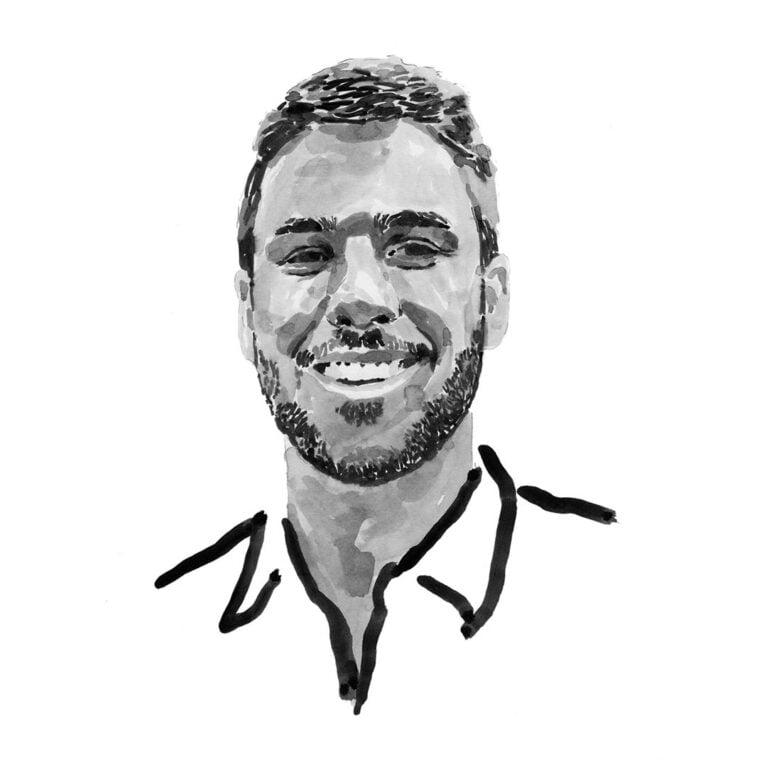Blake Hamilton

Who I am
My family instilled in me a sense of stewardship for natural resources, especially marine and aquatic ones, from a young age. Family outings always included some element of the outdoors. We moved around relatively frequently as I grew up. This allowed me to observe a wide array of unique environments, such as the impressive coral reefs of the Red Sea. The sheer, 40-metre (132-foot) drop-offs smothered in vibrantly coloured corals at Ras Mohamed National Park, at the southern point of Egypt’s Sinai Peninsula, served as an exceptional example of the beauty that can be found beneath the surface of the world’s oceans. Experiences like this left me eager to explore aquatic environments in any way possible. I attended the University of California at Davis for my Bachelor’s degree in environmental science and management, focusing on wildlife, fisheries and conservation biology. Soon after graduation, I began work monitoring salmon and steelhead trout in Northern California, where I spent my free time spearfishing and free-diving along the cold, rocky coast of the Pacific Northwest. Exploring this remote coastline, full of kelp forests, bright yellow and pink nudibranchs and playful harbour seals, refreshed my eagerness to pursue a career in marine fisheries. I soon ended up at the Bimini Biological Field Station, often referred to as the Shark Lab, where I dove headfirst into shark research. A position at the Virginia Institute of Marine Science followed, where I honed my field skills longlining, gill-netting and trawling the Chesapeake Bay and coastal Mid-Atlantic waters to collect data on everything from horseshoe crabs to adult common thresher sharks and Kemp’s ridley turtles. In spring 2019 I was offered a position to pursue a graduate degree at Florida State University’s Coastal and Marine Laboratory, where I now help to conduct and coordinate multiple fishery-independent surveys.
Where I work
My research and the projects I collaborate on span the north-eastern coast of the Gulf of Mexico to the Florida Keys. Part of this research involves employing a fishery-independent paired longline and gill-net survey from Apalachicola Bay through Florida’s Big Bend to Anclote Key. This expansive area contains one of the world’s largest continuous sea-grass beds, with wide-ranging environmental parameters driven by gradients in river influence. This project, as part of a collaboration with NOAA Southeast Fisheries Science Center’s Gulf of Mexico Shark-pupping and Nursery Area Survey, aims to identify areas and habitats of high relative importance to juvenile coastal sharks. This information is used by fishery managers to ensure the protection of these habitats and the sustainable harvest of fisheries resources in the Gulf. I am now beginning research on blacknose sharks in the Florida Keys and Florida Bay in conjunction with Dr Dean Grubbs’s smalltooth sawfish surveys in these areas. The spatial extent of this survey stretches from the mangrove tidal creeks of Everglades National Park to the Marquesas Keys in the west and offshore to the edge of the continental shelf, along the southern margin of the keys. These areas serve as an overlap in the distribution of the Gulf and Atlantic populations of blacknose shark, which are managed separately by federal agencies. This overlap begs the question of how these areas are used by the genetically distinct populations and to what extent this sympatry takes place on a spatio-temporal scale.
What I do
I am a fisheries ecologist with a focus on marine predators. My research aims to address gaps in knowledge where essential information for the conservation and management of fisheries resources is lacking. I like to target ecological questions whose outcomes are scientifically relevant in both basic and applied ecological contexts. The projects I run and collaborate on involve the use of fishery-independent methods to study the distribution and abundance of elasmobranchs and larger teleosts. However, we are also able to collect samples from captured fish, such as muscle for stable isotope analysis, fin clips for genetic studies and blood for stress physiology, while at the same time externally tagging each individual to contribute to NOAA’s mark-recapture efforts. As part of my research with blacknose sharks, we encounter a great diversity of elasmobranchs and collect the above data and samples from each individual for use by our many collaborators. Many telemetry projects have been facilitated via tagging through our surveys and we plan to continue these efforts with the use of acoustic telemetry to study blacknose shark movements. I am interested in using this information to inform fisheries management, but I also hope to analyse the data in a global change context, with specific attention to drivers of migration and habitat use, and how we may expect phenology and distributions to change given projections for alterations in environmental parameters such as sea surface temperature.
